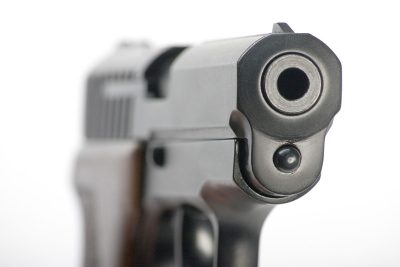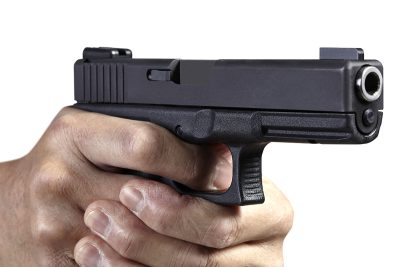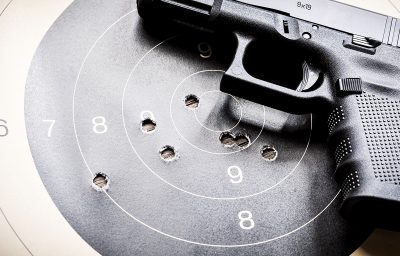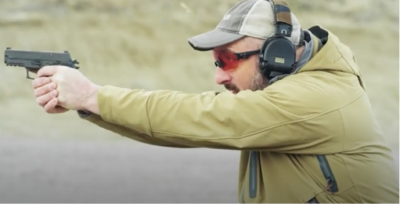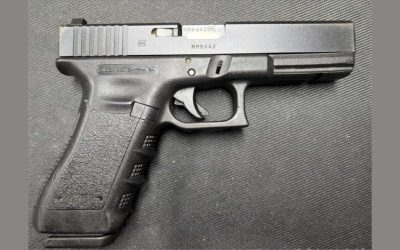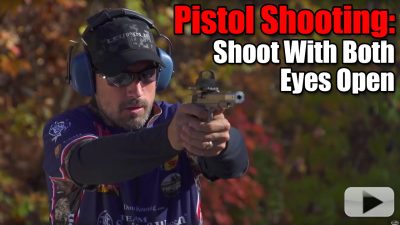Self-Defense Skills: The Strong-Side Draw
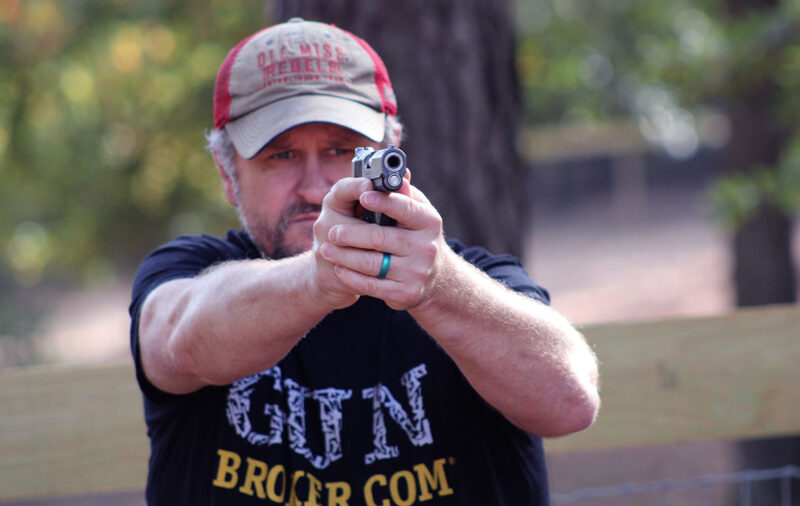
By Paul Rackley, GunBroker.com Editor
Being able to defend oneself requires more than just having a gun. In fact, it requires more than just carrying a gun. Sure, both are important, but self-defense requires knowing how to use a gun, particularly getting it out of concealment and into use, quickly. There are many ways to carry a handgun concealed and accessible. However, most experts recommend the strong-side draw.
Going all the way back to the cowboy days, the best place to carry a gun is near the hand that is going to use it, which typically means the strong hand. Even today, law enforcement officers, both uniformed and plain clothes, typically carry on the strong-side hip. This isn’t by accident. The strong-side draw is the fastest and safest way to get a handgun quickly into action, whether using outside-the-waistband or inside-the-waistband holsters.
Elements of the Strong-Side Draw
Drawing a gun isn’t rocket science; it just requires people to learn the proper motions and then practice those motions. There is an adage that says, “slow is smooth and smooth is fast.” That line absolutely applies to drawing a gun. Folks should practice the motions slowly to get them perfected, and then gradually speed up draw stroke as skills improve. Of course, people must learn the proper motions before practicing.
Properly performing a strong-side draw requires four motions—the Grip, the Pull, the Rock and the Extend. While this might seem like a lot of motion, those who practice can make these moves really quickly, even from concealment.
The Grip is exactly as it sounds. To start, bring back the hand to grip the handle with the supporting fingers, while bringing the weak hand up to the chest. Then, pull the gun up and out of the holster, keeping the trigger finger straight along the slide or cylinder. Once clear, rock the barrel toward the target. From here, the gun can be fired, if necessary, such as when an attacker is up close and personal. Finally, extend the gun forward, bringing the support hand up to the gun. Start slow and build the motions until speed comes naturally. Once fundamentals have been learned, add in a cover garment and train for the real world, which includes raising the cover garment with the support hand.
Practice, Practice, Practice
Practice is needed to get good at anything, whether soccer, pool or shooting. When it comes to defensive pistol skills, practice should be constant. If allowed, the best practice is performed at the range. Live fire adds realism, which can create stress. Stress is the single biggest uncontrollable component of a self-defensesituation. It needs to be added to training where possible.
Of course, most can’t hit the range as often they would like, and many ranges don’t allow draw training, even strong-side draw training. As such, dry-fire training is the pinnacle on which most stand their ground. This is particularly true with the rise in ammo prices over the last few years. Dry-fire training can be extremely effective, especially in draw training. Firing at a target from a draw adds realism, but draw training is about the draw, not the shot.
To practice at home, unload the gun and remove all ammunition from the area. Then, stand in front of a mirror and draw, while watching for mistakes. Practice until the draw is smooth and fast; a draw needs to be second nature. Now, many believe once the skill is mastered, they are good. However, training never ends, including the basics. To ensure that the draw can be performed when needed, shooters must train regularly. This includes both live and dry fire. Going to the range keeps skills from perishing. If, however, that is not an option, unload the gun and practice. Just a draw or two in the morning can keep skills fresh; just make sure the gun is unloaded.
Pros & Cons of Strong-Side
While most consider strong side to be the best way to carry, every method has some issues; no way is perfect for every situation. In fact, even strong-side carry has a couple of problems. Having a carry gun near the shooting hand provides speed and accessibility. There is no reaching across the body or twisting required to get a hand on a gun. However, it is almost impossible to obtain a shooting grip without revealing the gun; the cover garment must be moved to obtain a grip.
Another issue is printing. Even the smallest handgun can show through light clothes in the summer. Mostly this is not a problem since the average person lacks awareness and won’t notice. However, law-enforcement officers and some others might. Lastly, it is hard to draw a gun when sitting, especially in a car. Whether wearing a seatbelt or not, getting a hand on a gun while seated isn’t easy. It can be done, but it requires practice to determine the proper movements without sweeping someone with the muzzle.
Types of Strong-Side Holsters
Once the dangling Western rigs are removed from the list, there are three main types of strong-side draw holsters—inside-the-waistband (IWB), outside-the-waistband (OWB) and belly band. All three have benefits, depending on the situation and gun carried.
Just like it sounds, IWB puts the holster and muzzle inside the pants, at the waistband. These holsters allow the use of shorter cover garments, such as a jacket, vest or even a T-shirt. However, most shooters must go up at least one pants size to accommodate the gun; thinner handguns work better. Depending on the cant, folks can even carry guns with longer barrels. Cant refers to the angle of the holster in carry position. A zero-degree cant means the handgun barrel is straight down. Most holsters use a positive cant, meaning the handle tilts forward. The FBI cant is positive, and the most used.
Those who don’t want to wear baggier pants can consider OWB holsters. These holsters allow carrying thicker pistols, such as Glocks and Springfield XDs. However, they also require a longer cover garment, unless carrying something with a 2-inch barrel or less. Even then, folks must take care to prevent the bottom of the holster and barrel from peeking out from beneath.
The deepest concealment comes from an elastic band wrapped around the stomach and chest underneath the shirt. Called the belly band, this holster provides the best way to keep a gun concealed on the strong side. However, it is also the hardest from which to draw. Plus, belly bands bring guns close to the body, which includes body sweat.
Now there are numerous ways to carry a concealed handgun; this is only one of many. Each has benefits, as well as problems. No single method of carry a gun is perfect. Gunowners must decide how to carry depending on their personal need. It might even be best to carry multiple guns in different locations for different situations.
Related Video: How to Draw a Handgun From a Holster
Related Article: 5 Common Rifle Shooting Stance & Grip Mistakes
